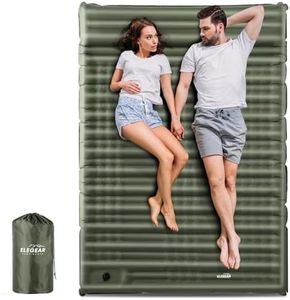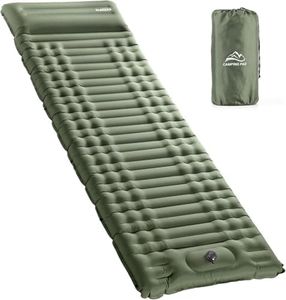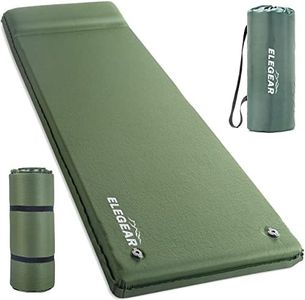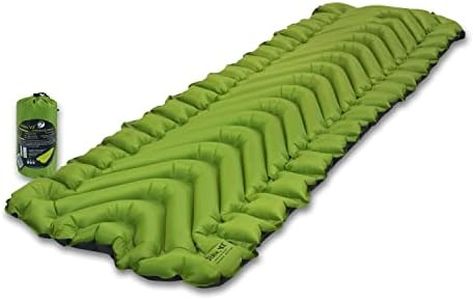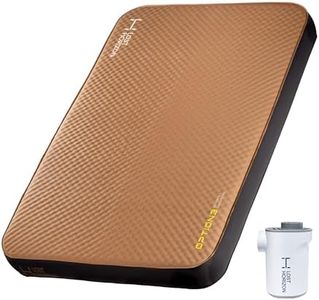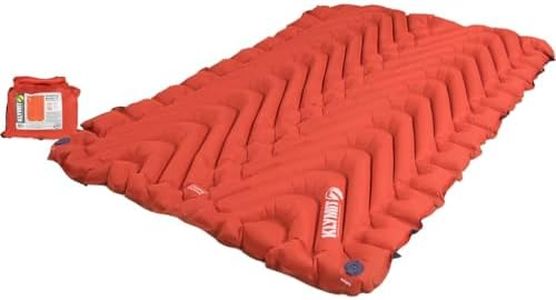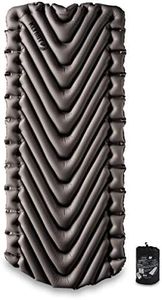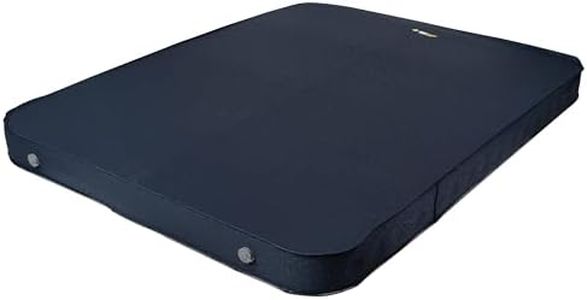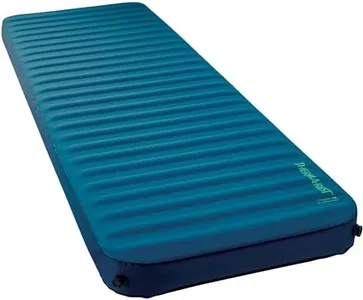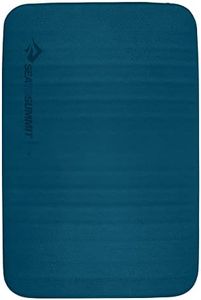We Use CookiesWe use cookies to enhance the security, performance,
functionality and for analytical and promotional activities. By continuing to browse this site you
are agreeing to our privacy policy
10 Best Self Inflating Sleeping Mattress
From leading brands and best sellers available on the web.Buying Guide for the Best Self Inflating Sleeping Mattress
Choosing the right self-inflating sleeping mattress can really improve your outdoor camping or travel experience by making sure you sleep comfortably and get enough rest. It's not just about convenience—it's also about how well the mattress supports your body, insulates you from the ground, and fits your packing style. To pick the best fit, you should think about where you'll be using it (like cold mountains or summer campsites), how you'll carry it (whether in a backpack or car), and what kind of sleeper you are (for example, if you move around a lot or need extra cushioning). Knowing about the main specifications will help you decide which mattress will best meet your needs.ThicknessThickness tells you how much cushioning you'll have between you and the ground. Thicker mattresses, usually around 3 inches or more, provide more comfort and insulation, especially for side sleepers or those camping on rocky terrain, but they are often bulkier to pack. Thinner mattresses, under 2 inches, are lighter and pack smaller—great for backpackers who prioritize saving space and weight, but these might feel less comfortable if you sleep on your side or need extra support. Think about how sensitive you are to ground hardness and how much comfort you want, then choose the thickness that matches your comfort and travel style.
R-Value (Insulation)R-value measures how well the mattress resists heat loss to the ground, which is important for staying warm, especially if you're camping in chillier seasons. An R-value below 2 is good for summer or warm-weather use, between 2 and 4 handles spring or fall temperatures, and above 4 is what you need for winter or cold weather camping. You'll want to match the R-value to the lowest temperatures you expect to sleep in—if you're prone to getting cold, lean towards a higher R-value. If you only camp in the summer, a lower R-value will keep you comfy and save on weight.
Weight and Pack SizeWeight and pack size determine how easy it is to transport your mattress. Ultralight or compact models are best for backpackers or those who carry all their gear, since these pack down small and weigh less. Heavier or bulkier mattresses can offer more comfort and space but are really best for car camping when carry distance doesn't matter. Think about how far you need to carry your gear and how much room you have; if you hike a lot, prioritize lighter and smaller options, but if you drive up to your campsite, go for comfort over compactness.
Size (Length and Width)The mattress's size ensures you have enough room to sleep comfortably. Standard sizes fit most adults, but longer or wider options exist for taller or larger people or those who move a lot at night. Smaller or ¾ length mattresses are lighter and save space, but your legs might hang off—these work better if you’re shorter or want to really minimize weight. To pick the right size, consider your height, shoulder width, and how much you tend to move in your sleep; always check the mattress dimensions and compare with your personal measurements.
Ease of Inflation/DeflationSelf-inflating mattresses use a valve to draw air in automatically, but some inflate faster or easier than others, and some need a bit of extra puff to get fully firm. Look for valves that are easy to operate and don't leak. Some designs let you adjust firmness so you can personalize comfort. Thinking about how quickly and easily you want to set up and pack away your mattress can help you pick—if you want minimal fuss, look for the simplest, most reliable valve system.
Durability and Surface MaterialDurability relates to how well the mattress holds up to rough ground, repeated use, and being packed in and out. Thicker materials and reinforced fabrics tend to last longer and resist punctures, but may weigh more, while lighter materials are easier to carry but need more careful handling. The surface texture also matters—it should be comfortable to lie on and not too slippery. If you camp in rugged areas or with pets and kids, prioritize toughness; if you’re always careful and want to go light, a thinner but well-made fabric is fine.
